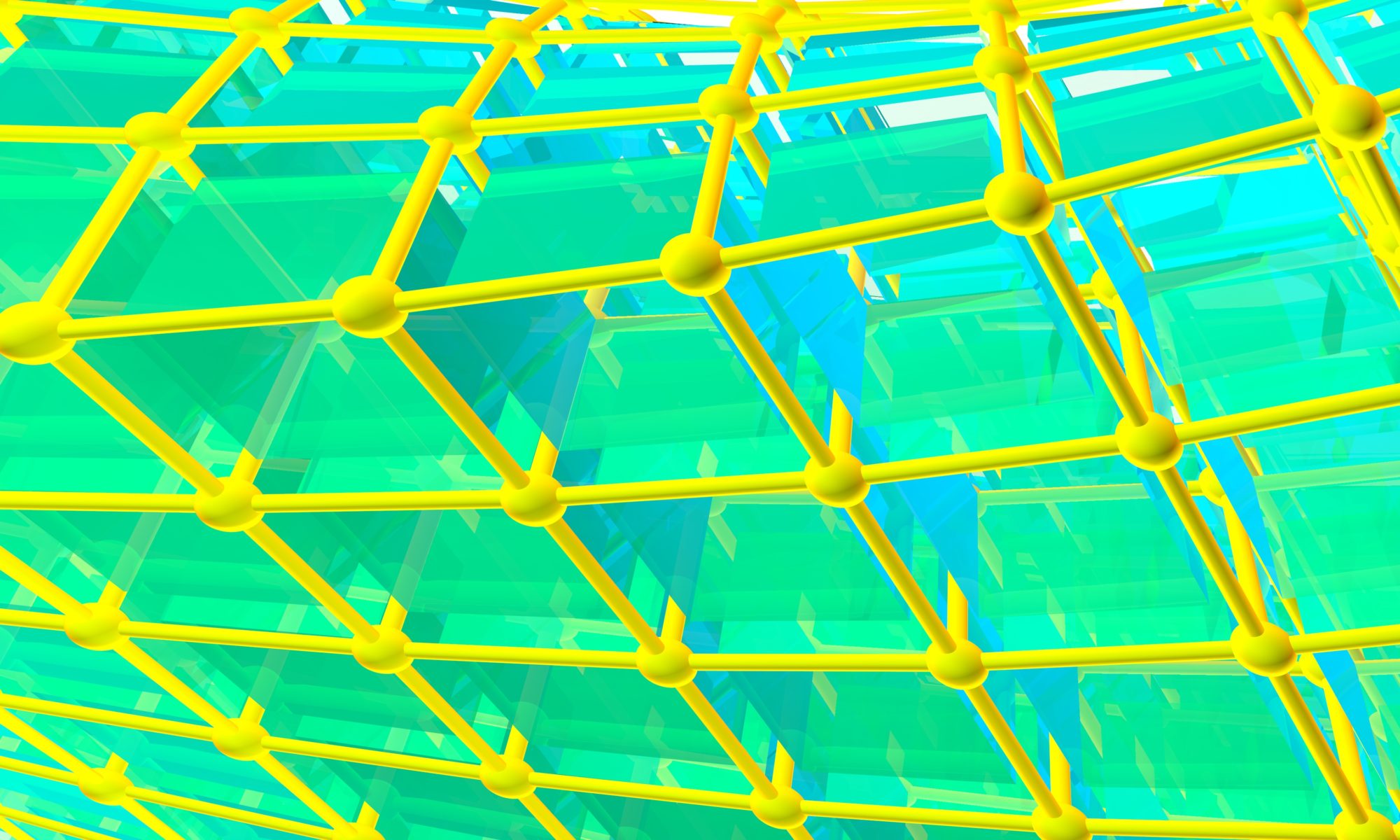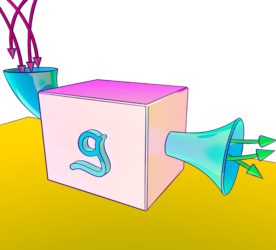one of the things i loved most in my engineering undergraduate education was learning kinematics — all kinds of cool mechanisms. the pendula that we’ve been looking at have some interesting joints. the planar pendulum has a simple hinge joint, easily built using a high-quality low-friction bearing. the spherical pendulum, on the other hand, has a ball-and-socket joint, which in practice could be effected by a spherical bearing. these are beautiful mechanisms that use lubrication and/or tiny ball bearings to get a nice clean swivel.
but this is not the only joint type with multiple degrees of freedom. consider the universal joint, built by fusing two transverse hinges, as illustrated below.
wouldn’t it be fun to simulate a double-pendulum with universal joints and compare it to the analogous system with spherical joints? what a good idea…
this is so much fun to play with… with the bottom views in particular, you sense that the universal joints give very different behavior than the spherical joints. the universals are more… jerky… constrainted. the spherical joints seem more free.
but are they? are they equivalent in some way? how would you tell? i like to think in terms of the configuration space of a joint (or system of joints). a universal joint has configuration space a 2-dimensional torus (one circle for each hinge joint). of course, this ignores physical constraints such as rigid bars colliding, but there you have it. the spherical joint, on the other hand, as a full SO(3) configuration space, which is three-dimensional, not 2-d like the universal. so, in one sense, this is why a spherical joint “feels” more free. it’s also the reason why a spherical joint cannot transmit torque the way that universal joints can. (universals — or rather pairs of them — are very helpful in automobiles to transmit power from the axles to the wheels…)

